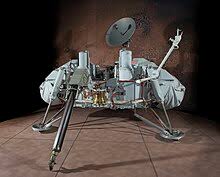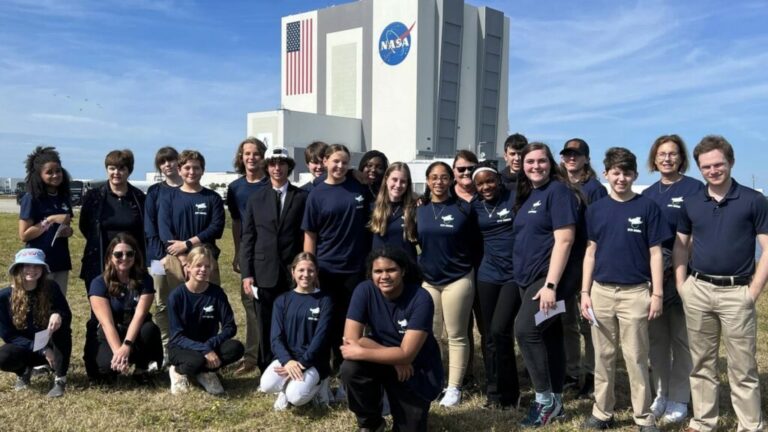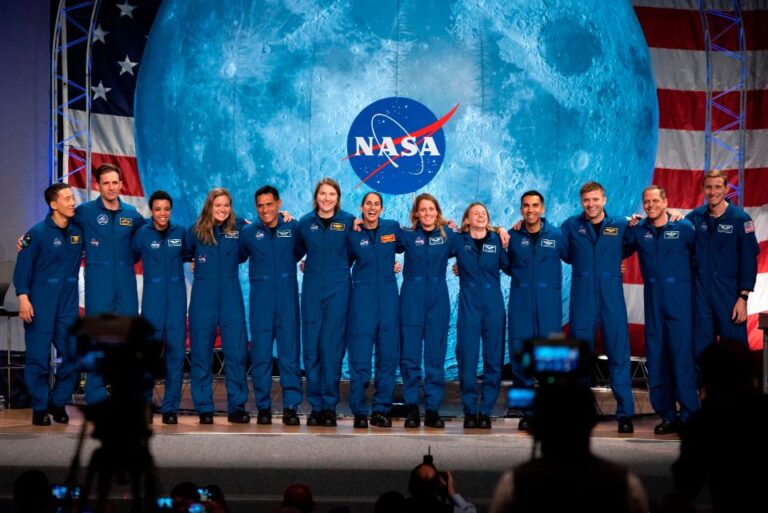 The Viking Program: Unveiling the Mysteries of Mars
The Viking Program: Unveiling the Mysteries of Mars
Introduction The Viking program was a groundbreaking NASA mission that aimed to explore the surface of Mars, becoming the first mission to successfully land functioning spacecraft on the Red Planet. Launched in the 1970s, the program consisted of two spacecraft, Viking 1 and Viking 2, each with an orbiter and a lander. The program’s primary objective was to gather detailed scientific data about Mars, including its atmosphere, surface, geology, and the potential for life. Viking was a pivotal step in humankind’s quest to understand Mars and laid the foundation for future missions to the planet.
Origins and Goals The Viking program originated in the context of NASA’s broader ambitions to explore Mars, building on the successes of earlier missions such as Mariner 4, which in 1965 provided the first close-up images of Mars. However, Mariner 4’s flyby revealed a cratered, Moon-like landscape, dashing earlier hopes that Mars might be more Earth-like.
Despite this, scientists remained eager to study the planet in greater detail, particularly its surface and atmosphere, and to determine whether life ever existed or could exist on Mars. The Viking program was thus designed with the following key objectives:
- To obtain high-resolution images of the Martian surface.
- To study the structure and composition of Mars’ atmosphere and surface.
- To search for evidence of life on Mars.
- To investigate the planet’s geology and climate.
The name “Viking” symbolized the program’s spirit of adventure and discovery, drawing inspiration from the Viking explorers of the past.
The Viking Spacecraft Each Viking mission was composed of two main components: an orbiter and a lander. These spacecraft were launched from Earth together, but once they arrived at Mars, the landers separated and descended to the surface while the orbiters remained in orbit to relay data and conduct their own observations.
- Orbiter: The orbiter’s primary function was to take high-resolution images of the Martian surface, scout for landing sites, and relay communications between the lander and Earth. Additionally, the orbiter conducted experiments to study the planet’s atmosphere, cloud cover, and surface features from orbit.
- Lander: The lander was equipped with scientific instruments designed to analyze the Martian surface and search for signs of life. It also carried cameras to capture images of the planet’s surface. The landers were equipped with robotic arms to scoop soil samples, which were then analyzed using sophisticated instruments for signs of biological activity.
The Viking 1 and Viking 2 spacecraft were identical in design, and both were launched using Titan III-E rockets. Viking 1 was launched on August 20, 1975, and Viking 2 followed on September 9, 1975.
Key Scientific Instruments The Viking program was equipped with a suite of scientific instruments designed to study the Martian environment in detail. Some of the most important instruments included:
- Cameras: Both the orbiters and landers were equipped with cameras to capture images of the Martian surface and atmosphere. The landers’ cameras provided the first-ever images taken from the Martian surface.
- Biology Experiments: The landers carried instruments designed to search for signs of microbial life in the Martian soil. These experiments included the Gas Exchange Experiment, the Labeled Release Experiment, and the Pyrolytic Release Experiment. Each test sought to detect metabolic processes that would suggest the presence of living organisms.
- Seismometer: A seismometer was included on the Viking landers to measure Mars’ seismic activity. Unfortunately, the seismometer on Viking 1 failed to work, and the one on Viking 2 didn’t produce conclusive results.
- Weather Station: The landers were equipped with instruments to measure atmospheric pressure, temperature, and wind speeds, providing the first-ever weather reports from Mars.
- Spectrometers and Analyzers: Instruments such as X-ray fluorescence spectrometers were used to analyze the chemical composition of the Martian surface and atmosphere.
Landing and Mission Timeline The Viking missions made history with their successful landings on Mars. Viking 1 became the first spacecraft to land and operate on the Martian surface on July 20, 1976, while Viking 2 followed on September 3, 1976.
- Viking 1 Landing Site: Viking 1 landed in Chryse Planitia, a relatively smooth, flat region in the northern hemisphere of Mars. The site was chosen based on the orbiter’s reconnaissance, which indicated that it was a safe and scientifically interesting location.
- Viking 2 Landing Site: Viking 2 landed in Utopia Planitia, a vast plain in Mars’ northern hemisphere. This region was selected due to its different geological characteristics compared to the Viking 1 landing site.
Both landers successfully conducted their scientific missions, including taking soil samples, analyzing the atmosphere, and sending detailed images of the Martian surface back to Earth.
Search for Life: Disappointing Results One of the most anticipated aspects of the Viking mission was the search for life. The biology experiments on the landers were designed to detect microbial life in the Martian soil by looking for metabolic activity. However, the results were inconclusive and, at the time, considered negative.
The experiments did show some chemical reactions, but these were later attributed to non-biological processes, likely caused by the highly oxidizing nature of the Martian soil. The soil was found to be extremely dry and chemically active, suggesting that the Martian environment was more hostile to life than initially hoped.
While Viking did not find direct evidence of life, the mission provided important insights into the conditions on Mars and the challenges of finding life in such an inhospitable environment.
Scientific Discoveries and Legacy Despite the lack of evidence for life, the Viking program provided an unprecedented wealth of scientific data that reshaped our understanding of Mars. Some of the key discoveries included:
- Martian Atmosphere: Viking found that Mars has a thin atmosphere composed primarily of carbon dioxide, with trace amounts of nitrogen and argon. The atmosphere also showed evidence of daily weather patterns, including dust storms.
- Martian Surface: Viking’s images revealed a barren, rocky landscape with red soil and iron oxide, giving Mars its characteristic reddish color. The landers also detected frost on the Martian surface, indicating that water ice existed on the planet, though the surface itself was found to be extremely dry.
- Evidence of Water Erosion: Viking’s orbiters captured images of channels and valleys that appeared to have been formed by liquid water in Mars’ past, suggesting that the planet may have once had a much wetter and possibly warmer climate.
- Mars as a Geologically Inactive Planet: While the Viking missions did not detect any significant seismic activity, they provided evidence that Mars was largely geologically inactive during that period. There was no sign of active volcanoes or tectonic activity.
Conclusion The Viking program was a landmark achievement in planetary exploration, providing the first close-up views of Mars’ surface and offering a wealth of data that transformed our understanding of the Red Planet. Although it did not find definitive evidence of life, Viking set the stage for future Mars missions, including the search for ancient water and potential habitable environments.
The program’s legacy continues to influence NASA’s exploration strategies for Mars, from the Mars Rover missions to planned future human expeditions. Viking demonstrated the feasibility of landing on and studying Mars, helping humankind take its first step toward exploring another world.







